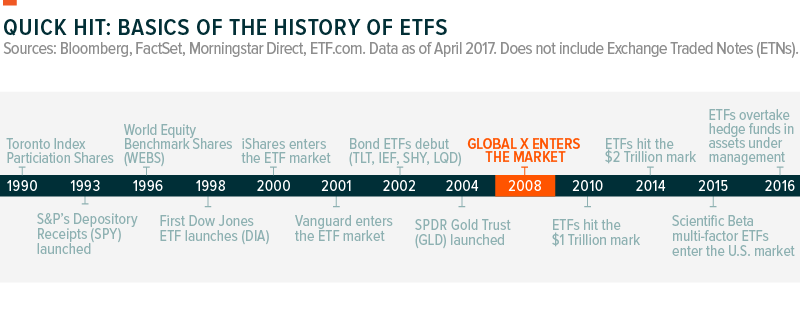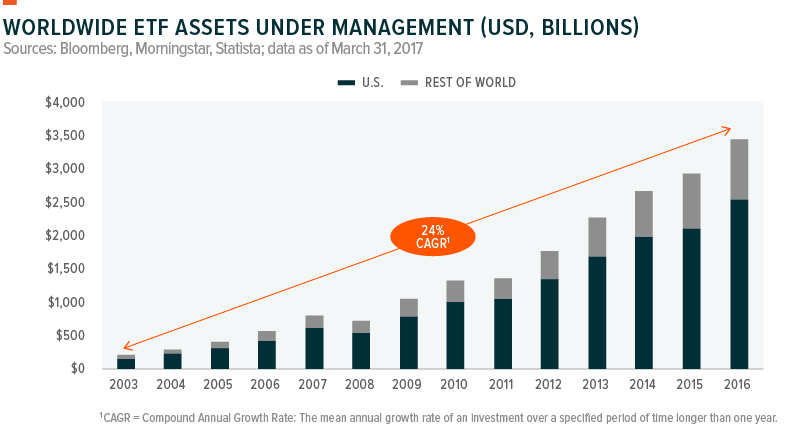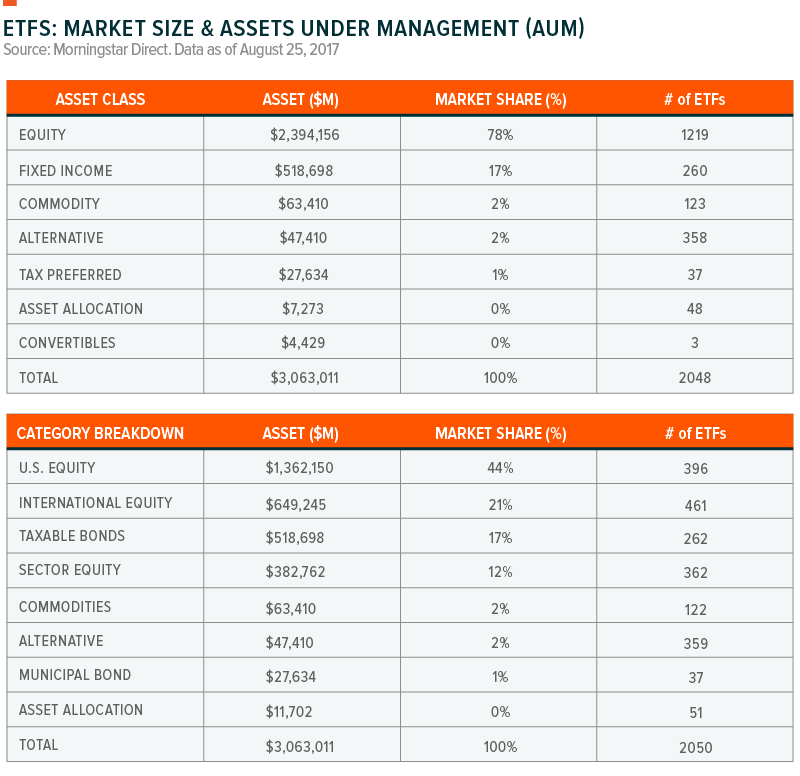How would you define ETFs?
Exchange-traded funds (ETFs) are typically index-tracking investment products that give investors exposure to a pool of securities or other assets. ETFs provide exposure to equity, fixed income, commodity, currency, as well as multi-asset, leveraged and inverse, and alternative investment strategies.
The investment objective of most ETFs is to replicate the returns of a particular index before fees and expenses, leading to a fund management style known as passive management. However, a small subset of ETFs are actively managed by a portfolio manager, allowing for human decisions to determine holdings and weights, while still publishing their portfolio holdings on a daily basis.
When buying shares of an ETF, what is actually purchased are shares of a portfolio, which is designed to track the yield and return of its benchmark index.
However, ETFs do not sell shares directly to investors. Shares of ETFs are issued in large blocks called creation units, typically numbering 50,000 shares per unit. Purchasers of creation units are often large financial institutions called Authorized Participants, and these purchases are often made “in-kind” vs. via a cash transaction. These “in-kind” transactions can have potential tax efficiency benefits in relation to capital gains tax treatment.
ETFs have become commonplace and accepted as an investment vehicle. In the US alone, ETFs are now valued at ~$3 trillion. They often offer low fees and can be tax-efficient (striving to minimize capital gains distributions) which are factors that have driven utilization.
Convenience also makes ETFs attractive. Market demand has proven to be high for products that can be traded intra-day with no upfront load (note that there may be associated commissions and other trading costs).
ETFs have granted wider access to investing by providing smaller investors with efficient access to investments, such as commodities, factor-based strategies and alternative investment strategies that previously have not been readily available to them in the past.

What is the market size in assets under management for ETFs?
There are several key drivers that have led to the growth of ETF assets under management. These key drivers can include the unique characteristics of ETFs, the exposure ETFs provide to previously inaccessible markets and the increased use of asset allocation models and strategies.
The unique characteristics that distinguish ETFs from traditional mutual funds, including: intra-market-day fund liquidity, full transparency of holdings and ability to be created or redeemed by certain investors in large units via in-kind trading vs. via cash.
ETFs have in some ways truly democratized investing as they allow small and large investors access to previously inaccessible or cost-prohibitive markets domestically or abroad.
As access to markets has expanded, the already complicated business of investing has only grown more complex. The growing use of asset allocation models, which incorporate a combination of investment products can help to streamline some of this complexity, and adoption by advisors as an integral part of their practice has become quite widespread.
All in all, ETFs have seen rapid adoption (see chart below), especially in the US, and the forecast for growth continues to look robust.

When examining global market share, ETF assets can be split apart by asset class, economic development and region. Developed markets largely represented by the US often represent a large portion of the total number of ETF assets under management no matter how market share is split:
- By Asset Class: ETFs that track indexes that are equity based make up the majority (~78%) of all ETF AUM. Fixed Income ETFs are also a very material portion of the market (~17% market share)
- By Category: It is probably no surprise that US Equities and the indexes that track them have the highest notional value, at ~44% of total AUM, when splitting apart ETFs across Equities, Fixed Income, and Alternatives.
- Number of ETFs: ETFs tracking International Equities have the highest number of funds in the ETF universe right now. Equities in general make up nearly 60% of the ETF fund universe.

This post is the first post of a multi-part series of pieces designed to provide education around ETFs. For the full publication, click here.
 Global X ETF Model Portfolio Team
Global X ETF Model Portfolio Team